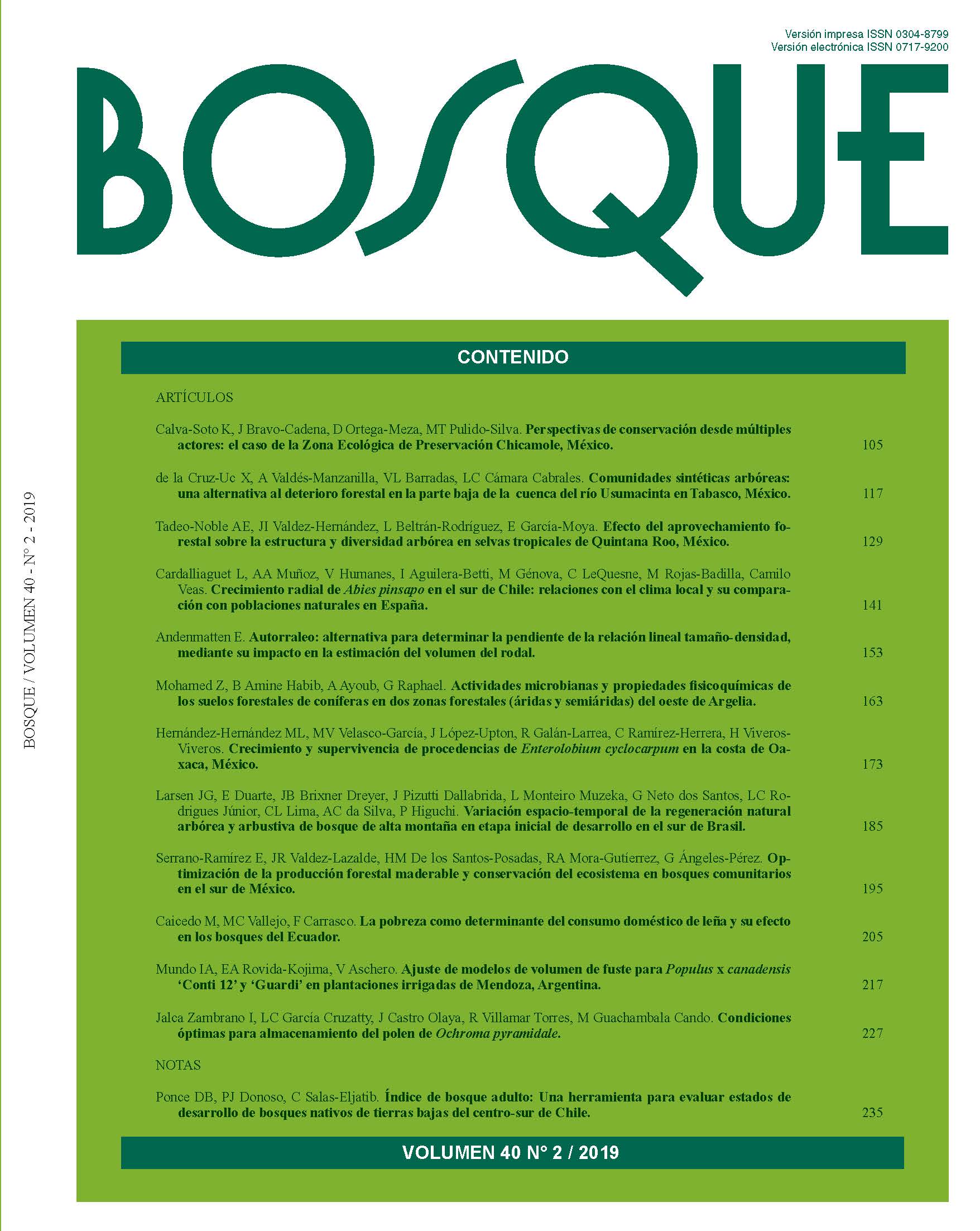Old-growth Index: a tool to evaluate developmental stages in native forests in the lowlands of south-central Chile
Main Article Content
Abstract
In the lowlands of south-central Chile, old-growth forests are scarce, whereas secondary forests are more frequent. The ecosystem services provided by these secondary forests differ from those associated with old-growth forests, reflecting their differences in composition and forest structure. Trees over 200 years-old, basal areas higher than 80 m2, several shade-tolerant trees and large diameters, among other characteristics distinguish old-growth forests. Evaluation of the stage of development of a forest may be useful for classification purposes, and management reports. In this study, we applied an old-growth forest index based on Acker et al., to the lowland forests of south-central Chile. The index considered five variables: density, basal area, basal area of the trees > 80 cm in diameter, basal area of shade-tolerant species and Gini’s coefficient. We employed plots with areas ranging from 900 to 2,500 m2 from four secondary forests (two dominated by Nothofagaceae and two by other evergreen species) and from three old-growth forests (two with emergent Nothofagaceae and one without emergent Nothofagaceae). Results allowed us to suggest that index values larger tan 80 would represent old-growth forests, values between 60 and 80 would be forests in transition, and values lower than 60 forests with a scarce presence of old-growth attributes. According to the type of forest, the proposed index could differ in terms of the variables used in different regions of Chile.

